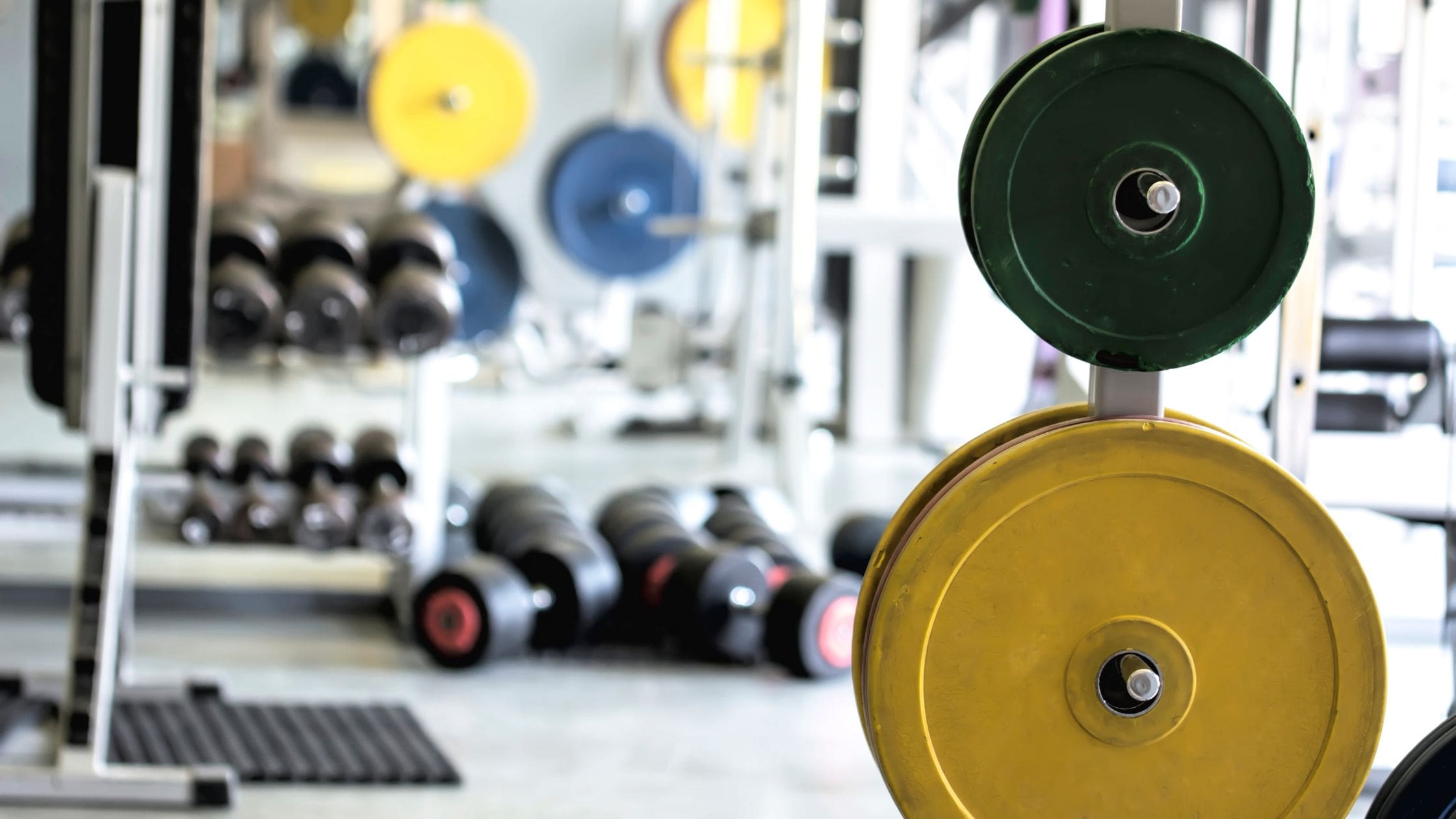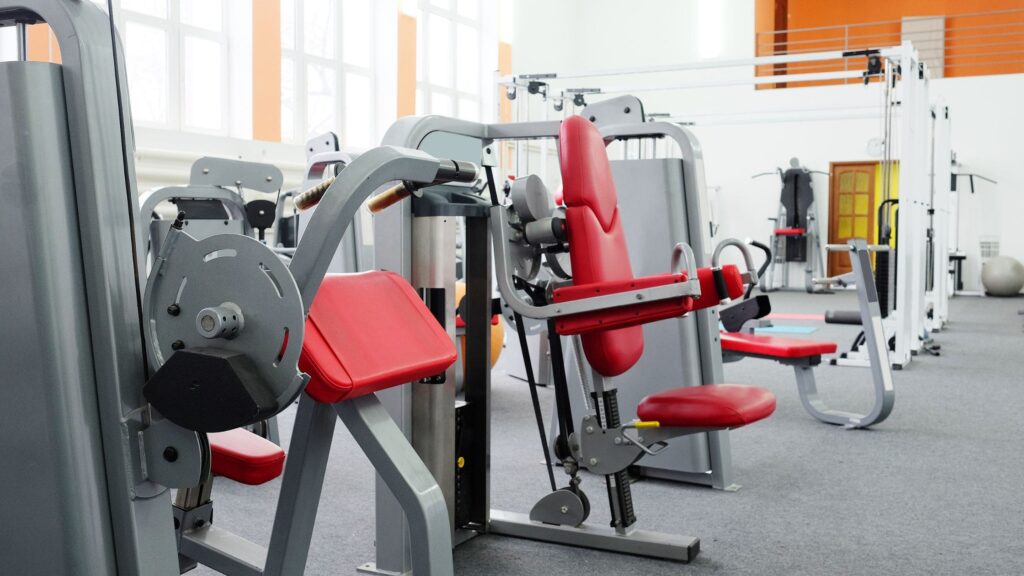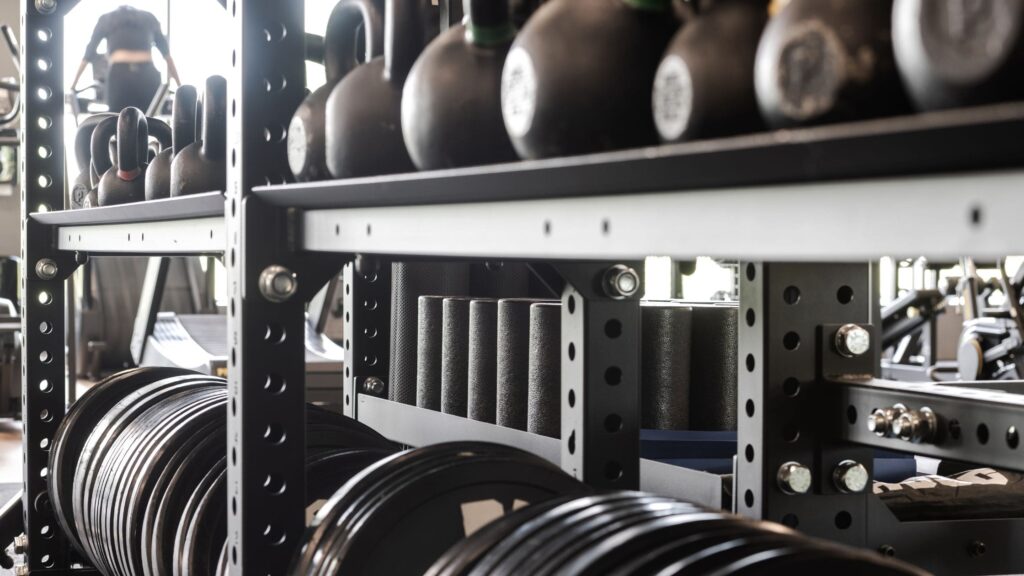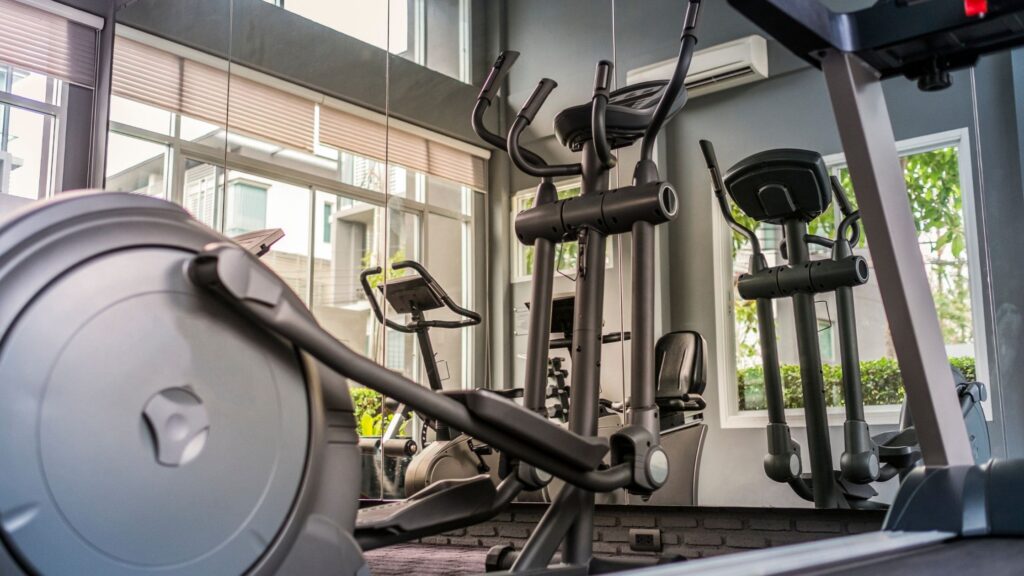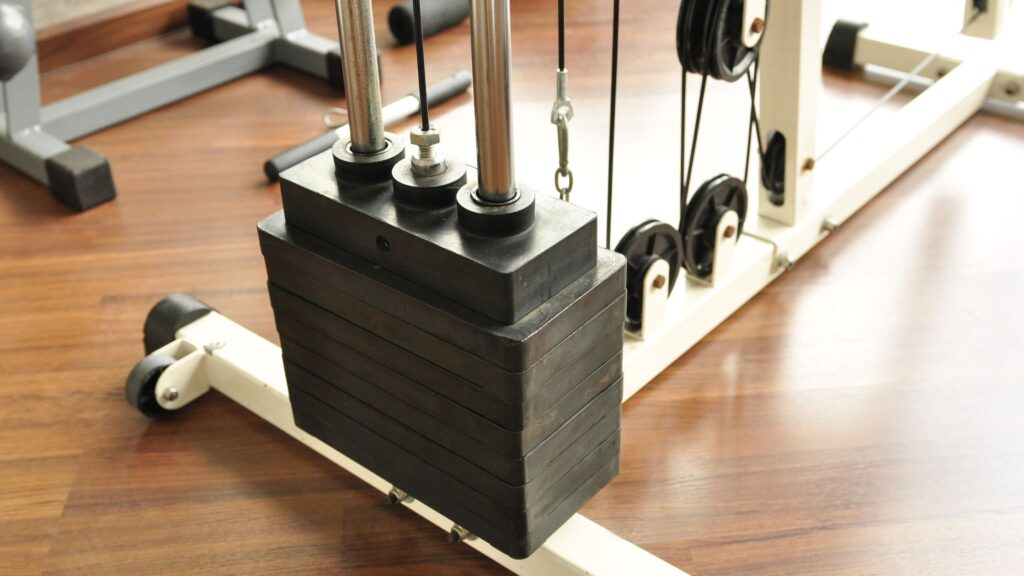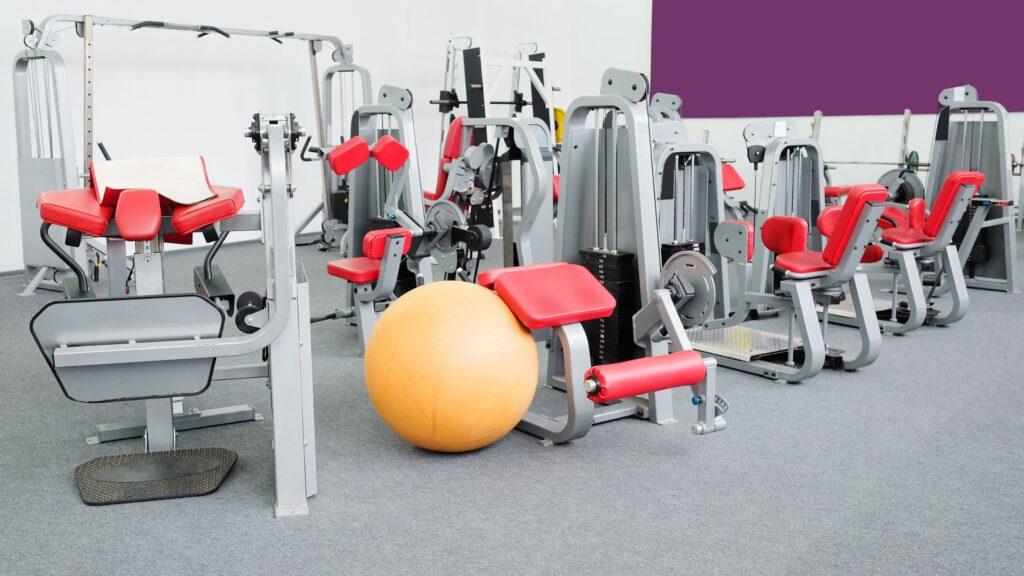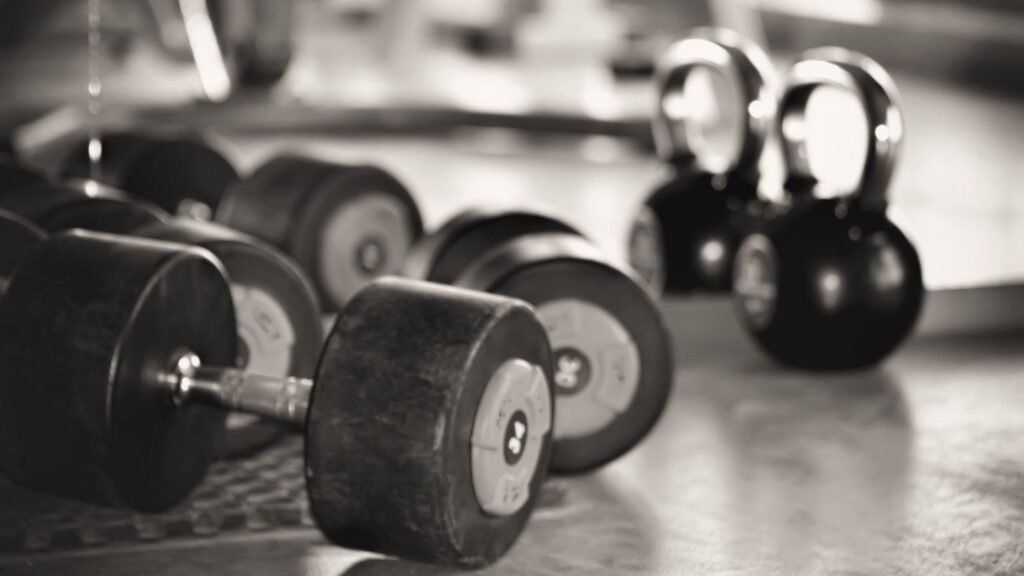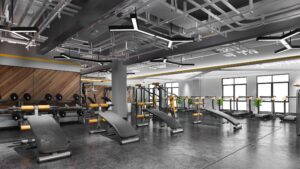Whether you’re designing a sleek fitness center, upgrading a health club, or building the perfect home fitness, the choice between new and used gym equipment plays a big role in your budget, the look of your space, and how well the equipment meets your needs.
It’s not just about numbers or aesthetics; it’s about finding the right balance for your goals. Do you value high-end features and warranties? Or are you more focused on stretching your budget without compromising quality? The answer can vary depending on your priorities and the kind of gym you envision.
In this article, we’ll guide you through the key factors to consider when choosing between brand new and used gym equipment, helping you weigh the pros and cons and make a decision that fits your vision and needs.
What Are the Key Differences Between New and Used Gym Equipment?
New gym equipment offers pristine condition, advanced features, and the latest technology. From treadmills with interactive apps to strength equipment with digital displays, brand-new gym equipment often reflects the latest fitness trends. This modern touch enhances the overall appeal of a gym or home workout space. New equipment also typically includes a manufacturer’s warranty package, providing peace of mind regarding repair costs and maintenance.
In contrast, used gym equipment can be a cost-effective choice. Its lower retail price makes it an attractive option for budget-conscious buyers, including smaller gyms and individuals setting up home gyms. However, used equipment may show signs of wear and tear, which could affect its functionality and lifespan. The lack of a warranty in many cases means you may need to account for potential repair costs down the line.
Another key difference lies in the availability of replacement parts. With new equipment, manufacturers often guarantee the availability of parts for several years, while older models may have limited support. Additionally, hygiene issues can be a concern with used equipment, as prior usage history might not be well-documented.
What Are the Advantages of New Gym Equipment?
Investing in brand-new gym equipment comes with numerous benefits that can elevate your fitness center, health club, or home gym experience. These advantages are particularly important for gym owners aiming to attract members and ensure long-term success:
- Latest Technology and Features: New gym equipment offers access to the latest advancements in the fitness industry. Features such as digital displays, heart rate monitors, and interactive apps make workouts more engaging. These technologies allow users to track their progress effectively, which can be a significant motivator for fitness goals. Additionally, advanced features like AI-driven settings and virtual coaching cater to modern fitness trends.
- Warranty Coverage: One of the biggest advantages of new gym equipment is the warranty package. Manufacturers often include coverage for repairs and replacements, ensuring peace of mind. This reduces unexpected repair costs and guarantees customer support for any issues.
- Durability and Longer Lifespan: New gym machines are designed with high-quality materials, making them durable enough to withstand heavy usage. This ensures a longer equipment life, making the investment worthwhile for both commercial and personal use.
- Aesthetic Appeal: Sleek and modern designs of brand-new gym equipment add to the overall ambiance of any facility. Whether you’re setting up a fitness center or a home gym, the visual appeal of new equipment enhances the professional look of your space.
- Lower Maintenance Costs Initially: Unlike used gym equipment, new machines have no prior wear and tear. This means fewer immediate maintenance tasks, which saves both time and money. The absence of previous usage history translates into reliability.
- Enhanced Safety Features: Safety hazards are a common concern when buying fitness equipment. New equipment adheres to the latest safety standards, reducing the risk of injury. Features such as enhanced stability, updated safety locks, and advanced mechanisms provide added security.
- Increased Customer Satisfaction: For gym owners, new gym equipment can directly influence member satisfaction. High-quality, modern machines make workouts more enjoyable, increasing member retention rates. Satisfied customers often become loyal members, boosting the gym’s reputation.
- Customization Options: New equipment allows for customization to match your brand’s identity. You can select specific colors, add logos, or choose unique features that align with your business needs. This flexibility is a significant advantage over used gym equipment.
- Better Brand Image: Using brand-new gym equipment reflects positively on your gym’s reputation. It signals a commitment to quality and innovation, helping you attract more customers and build trust in the fitness world.
What Are the Disadvantages of New Gym Equipment?
While new gym equipment has its advantages, there are also drawbacks that gym owners and fitness enthusiasts should consider. These factors often revolve around cost, practicality, and specific requirements. The six main disadvantages of new gym equipment are:
- Higher Initial Cost: The most significant downside of buying new gym equipment is the upfront investment. New gym machines often come with a high retail price, which can strain the budget of small businesses or individuals setting up a home gym.
- Rapid Depreciation: Once new gym equipment is purchased and used, its value depreciates quickly. This price difference can be substantial, especially for gym owners who plan to upgrade or sell equipment later.
- Longer Delivery Times: Manufacturing and shipping brand-new gym equipment can take weeks or even months. For businesses on tight schedules, this delay can affect plans for opening or upgrading a gym.
- Limited Customization Without Extra Cost: Although new equipment offers customization options, these often come at an additional cost. Custom features like branding or specific color schemes can increase the overall expense and extend delivery times.
- Higher Insurance Costs: Because new gym equipment is more expensive, insuring it can also cost more. Gym owners may find their insurance premiums increasing to account for the higher value of these machines.
- Potential Overkill for Beginners: Advanced features and cutting-edge technology in new equipment may not be necessary for everyone. Beginners or casual users might find simpler machines more practical, making the added expense of new gym equipment less justifiable.
What Are the Advantages of Used Gym Equipment?
Investing in used gym equipment can provide numerous benefits, especially for gym owners, fitness centers, and home gym enthusiasts looking to maximize value without stretching their budgets. The seven advantages listed below make used fitness equipment a viable option for many scenarios:
- Lower Upfront Cost: One of the most compelling reasons to buy used gym equipment is its affordability. The retail price for used equipment is significantly lower compared to brand-new gym equipment, making it ideal for budget-conscious gyms or individuals. Whether you’re purchasing gym machines or strength equipment, the reduced cost can help save money while still meeting your fitness goals.
- Immediate Availability: Used equipment is often available for immediate purchase and installation. Unlike new gym equipment, which may have extended manufacturing and delivery times, used gym equipment allows you to set up your space quickly. This can be a major advantage for gym owners who need to operationalize their fitness center promptly.
- Sustainability and Environmental Benefits: Opting for used gym equipment contributes to sustainability by reducing waste and extending the equipment’s life. Reusing exercise equipment minimizes the demand for manufacturing new products, conserving resources and supporting environmentally friendly practices.
- Lower Depreciation Rate: Unlike new gym equipment, which depreciates rapidly after purchase, used equipment retains its value more effectively. This slower depreciation rate makes used equipment a smarter investment for those planning to resell it later.
- Good Value for Quality: High-quality brands are known for their durable fitness equipment, and even when purchased used, these machines can deliver excellent performance. For gym owners, this means they can acquire premium models without paying the full retail price.
- Ideal for Budget-Conscious Gyms: Used gym equipment allows gym owners to expand their inventory without significant financial strain. This can be particularly beneficial for small gyms, startup fitness centers, or health clubs looking to grow their offerings incrementally.
- Opportunity to Test Equipment Types: Used equipment provides an opportunity to try out various machine types and models before making a long-term investment. This can help gym owners determine which equipment categories and features work best for their members or personal fitness goals.
What Are the Disadvantages of Used Gym Equipment?
There are several disadvantages that either a gym owner or fitness enthusiast should keep in mind. These drawbacks often revolve around maintenance, technology, and customization limitations.
- Limited or No Warranty: One of the biggest concerns with used gym equipment is the lack of a warranty package. Without manufacturer support, you may face out-of-pocket repair costs if the equipment fails or requires replacement parts.
- Potential Wear and Tear: Used gym equipment often shows signs of previous usage, which may affect its condition. Components like belts, cables, and electronic displays could be worn down, potentially leading to performance issues.
- Outdated Technology: Older equipment may lack the latest technology found in new gym equipment. Features like digital displays, app connectivity, and advanced heart rate monitors may be missing, which can reduce the appeal for users accustomed to modern fitness trends.
- Higher Maintenance Costs: The likelihood of increased maintenance costs is higher with used equipment. Worn components may need immediate repairs or replacements, and finding compatible parts for older models could be challenging.
- Safety Concerns: Safety hazards can arise from worn or damaged components. Issues with stability, loose parts, or outdated safety mechanisms may pose risks to users, particularly in high-usage environments like gyms.
- Limited Customization: Unlike new gym equipment, used options are limited to what’s available in the secondary market. Customization for branding, colors, or specific features may not be possible.
- Uncertain Equipment History: When buying used equipment, the usage history is often unclear. You may not know how well the previous owner maintained the machine, increasing the chances of encountering unexpected problems. However, this can be mitigated by
How Do New and Used Gym Equipment Compare?
When choosing between new and used gym equipment, it’s essential to understand how each option aligns with your needs and priorities. This section compares key factors to help gym owners, fitness center managers, and home gym enthusiasts make an informed decision.
Price
New gym equipment comes with higher initial costs, which can be a significant consideration for smaller businesses or individual buyers. The retail price for new workout equipment reflects its unused condition, advanced technology, and manufacturer warranties.
However, many manufacturers and retailers offer financing options to make the upfront investment more manageable. For gym owners focused on long-term use and the latest features, these costs can be justified as part of the business’s overall budget.
Used gym equipment is generally much more affordable, offering significant savings compared to new gym equipment. This makes it an attractive option for budget-conscious buyers or those setting up a gym for the first time.
However, it’s crucial to account for potential hidden costs, such as repairs, maintenance, or replacement parts. The initial savings on used equipment may diminish if repair costs escalate over time, so proper inspection before purchase is essential.
Condition
New gym equipment arrives in pristine condition, free from any wear or damage. This guarantees optimal performance and ensures that the equipment will last longer if maintained properly.
With no prior usage history, you won’t have to worry about hidden defects or compromised parts. For health clubs or fitness centers aiming to offer a premium experience, new equipment provides a professional and reliable solution.
The condition of used gym equipment can vary significantly depending on its previous usage history. While some machines may be well-maintained and in good working order, others may show signs of wear and tear, including worn belts, outdated electronics, or rusted frames.
For this reason, inspecting the equipment thoroughly before purchase is critical. Knowing the equipment’s condition upfront helps avoid safety hazards and unexpected repair costs.
Warranty and Support
When you invest in brand-new gym equipment, it typically comes with comprehensive warranties. These warranties often cover repairs, replacement parts, and, in some cases, routine maintenance for a set period.
Manufacturers provide dedicated customer support to address any issues, giving gym owners peace of mind. This level of assurance reduces potential repair costs and ensures smooth equipment usage. Additionally, having a warranty package is especially important for gyms and fitness centers with high daily traffic, as unexpected downtime can disrupt business.
In contrast, used gym equipment often has limited or nonexistent warranties. Without manufacturer backing, repair costs for worn components or malfunctioning gym machines can become a recurring expense.
However, companies like Best Used Gym Equipment mitigate these concerns by offering refurbishing services, thorough cleaning, full installations, and comprehensive maintenance options. These services enhance the reliability of used equipment, making it a viable option for fitness centers or home gyms looking to save money while still receiving quality support.
Technology and Features
New gym equipment incorporates the latest advancements in fitness technology. From interactive apps and virtual coaching features to built-in heart rate monitors and digital displays, these machines cater to modern fitness trends.
Such equipment provides enhanced user engagement, helping gym members achieve their fitness goals more efficiently. For gym owners, having advanced features can attract more members and create a competitive edge in the fitness industry.
Used gym equipment may lack these cutting-edge features. Machines purchased on the secondary market often miss software updates or compatibility with the latest fitness apps.
While they fulfill basic exercise needs, they might not provide the enhanced experience some customers expect. Despite this, high-quality used equipment from reputable sellers can still deliver reliable performance for cardio and strength training.
Lifespan and Durability
Brand-new gym equipment has a longer lifespan due to its fresh components and unused condition. Proper maintenance ensures these machines remain operational for years, making them an excellent long-term investment for gym owners.
Whether it’s treadmills, strength equipment, or workout machines, new equipment offers reliability and durability even under heavy usage in fitness centers and health clubs.
The lifespan of used gym equipment depends on its prior usage history and current condition. While refurbished equipment can function well, older models often require repairs sooner than new equipment.
This reduced durability may lead to earlier replacement, which could increase overall costs. Ensuring you purchase used equipment from a trusted seller and inspecting it thoroughly before buying can help mitigate these risks.
Safety
New gym equipment is designed to meet current safety standards and industry regulations. These machines are manufactured with the latest safety features, such as enhanced stability, secure locking mechanisms, and updated protective components.
For gym owners, this ensures a lower risk of injury for members and builds trust in the facility’s commitment to customer safety. The absence of wear and tear further guarantees that each machine operates as intended, providing a safer workout environment for users.
Used gym equipment, while cost-effective, may present safety concerns due to potential wear and tear. Components such as cables, belts, or structural parts may be worn down, leading to stability or performance issues.
Outdated models might not include modern safety features found in new gym equipment. For example, older treadmills or strength equipment may lack updated emergency stop systems
Maintenance
Brand-new gym equipment requires minimal maintenance initially due to its pristine condition and absence of prior usage. Replacement parts are readily available through manufacturers, making any necessary repairs straightforward.
For gym owners and fitness centers, this reduces unexpected repair costs and ensures uninterrupted equipment usage. Regular cleaning and basic upkeep are usually sufficient to keep new equipment in optimal condition.
Used gym equipment often requires immediate or ongoing maintenance, depending on its condition at the time of purchase. Components like bearings, belts, or electronic displays may need replacement sooner than expected.
Finding compatible replacement parts for older models can also be a challenge, potentially increasing repair costs. Providers like Best Used Gym Equipment help address these issues by offering full maintenance services, including refurbishing and professional cleaning, to extend the equipment’s life and reliability.
Brand and Model Availability
New gym equipment gives you access to the latest models from top fitness brands. These machines often incorporate the newest fitness trends and technologies, catering to modern customer demands.
Gym owners can select from a wide range of gym equipment models, ensuring that the machines align with their facility’s specific needs and branding. Customization options, like colors and logos, are also more readily available when purchasing new equipment.
The availability of used gym equipment is typically limited to existing stock on the secondary market. Newer models may be harder to find, and options are often restricted by what sellers or refurbishers have on hand.
Still, high-quality used machines from reputable brands can still deliver excellent performance. While you may not have access to the latest technology or customization options, purchasing from a reliable seller ensures you get dependable equipment at a fraction of the cost.
Installation and Setup
One significant advantage of purchasing new gym equipment is the inclusion of professional installation services. Most manufacturers and retailers ensure that the equipment is delivered, assembled, and tested by experienced technicians. This process guarantees that the equipment is set up correctly and functions as intended, minimizing safety hazards or operational issues. For gym owners, this service adds convenience and ensures peace of mind, as any mistakes during installation are addressed by the professionals. Whether it’s a treadmill, strength equipment, or multi-station machines, proper setup enhances the equipment’s longevity and performance in fitness centers and health clubs.
In contrast, used gym equipment often requires a do-it-yourself approach or hiring third-party installers. This lack of professional installation can increase the risk of improper setup, especially for complex gym machines with intricate parts or connections
Depreciation Rate
New gym equipment tends to depreciate quickly after purchase, losing a significant portion of its retail price within the first few years. This rapid decline in value can be a concern for gym owners looking to resell or upgrade their machines in the near future.
Despite this, the initial investment in new gym equipment may be justified by its advanced features, extended warranty coverage, and professional appeal, which can attract more customers to a fitness center.
Used gym equipment has already undergone its most substantial depreciation before being sold on the secondary market. As a result, it retains its value better over time, making it an appealing option for budget-conscious buyers. This slower depreciation allows gym owners to recover a larger portion of their investment if they decide to resell the equipment later
Environmental Impact
The production of new gym equipment requires significant natural resources, including metals, plastics, and energy for manufacturing and shipping. This resource-intensive process contributes to environmental strain, especially in the context of growing concerns about sustainability in the fitness industry.
Additionally, the packaging and transportation of new equipment add to its environmental footprint, making it a less eco-friendly option for gyms aiming to adopt green practices.
Choosing used gym equipment is a more sustainable alternative, as it promotes the reuse of existing resources and reduces waste. By purchasing pre-owned machines, gym owners contribute to lowering demand for new manufacturing, minimizing the environmental impact associated with resource extraction and production.
This eco-friendly approach aligns with the values of many fitness enthusiasts who prioritize sustainability, making used equipment a smart choice for businesses looking to appeal to environmentally conscious customers
Long-Term Value
New gym equipment can be a solid long-term investment, particularly when maintained properly. With no prior usage history, these machines come equipped with pristine components, ensuring a longer lifespan if regularly serviced.
Gym owners benefit from warranties and customer support, reducing repair costs during the early years of operation. Additionally, investing in brand new gym equipment can enhance your fitness center’s reputation, as it reflects a commitment to quality and innovation. Over time, the higher upfront costs may balance out due to fewer immediate replacements and lower maintenance requirements, especially in busy facilities such as health clubs or commercial gyms.
Used gym equipment, while initially more affordable, may incur higher costs over time. Maintenance expenses tend to rise as components wear out faster, especially if the equipment hasn’t been properly refurbished. Unlike new machines, used options often lack warranty coverage, leaving gym owners responsible for all repairs.
However, reputable sellers often provide refurbished equipment with extended services like cleaning and installation, ensuring better performance and usability.
Accessibility and Availability
New gym equipment is often made to order, which can result in lead times before delivery. For gym owners looking to customize equipment to fit specific branding or facility requirements, this waiting period may extend further.
While this option allows you to receive the latest models with modern features, it can delay the opening of a new fitness center or expansion of an existing gym. For gyms operating on tight schedules, the delayed availability might create challenges in meeting immediate fitness goals or customer demands.
Used gym equipment is typically available for immediate purchase, allowing gym owners to quickly stock their fitness center or home gym without delays. The secondary market provides a wide variety of machines, including popular brands and equipment categories, at more affordable prices.
This option is particularly beneficial for gym owners who need to replace broken machines or expand their equipment selection without waiting for manufacturing and shipping
Resale Value
New gym equipment experiences rapid depreciation after purchase, significantly lowering its resale value within the first few years. For gym owners, this can be a disadvantage if you plan to upgrade frequently or resell older machines.
Despite the lower resale value, brand new gym equipment attracts fitness enthusiasts with its advanced features and modern design, providing a competitive edge in the fitness industry.
Used gym equipment tends to retain its value better over time, as it has already undergone its initial depreciation. For gym owners looking to recoup some of their investment, selling used equipment is often easier and yields a higher proportion of the original cost. This factor makes it an appealing choice for budget-conscious businesses or those planning periodic upgrades.
Financing Options
When buying brand new gym equipment, financing plans are often readily available. Many manufacturers and retailers provide flexible payment options to help gym owners manage the upfront cost of high-quality equipment.
These plans typically allow you to spread payments over months or years, making it easier to maintain a steady budget while investing in fitness equipment. Financing also enables gym owners to acquire the latest models, including treadmills, strength equipment, and other gym machines, without requiring full payment upfront
Used gym equipment usually requires full payment upfront, as financing options are less common in the secondary market.
While the lower retail price makes it more affordable initially, the lack of payment plans may challenge gyms with limited cash flow. However, some reputable sellers offer discounts or bundles for multiple purchases, reducing the overall cost. For small businesses or home gym setups, this affordability often outweighs the absence of financing options.
Space Requirements
With new gym equipment, you have the flexibility to choose models that perfectly fit your available space. Manufacturers often provide a wide range of sizes and configurations, ensuring you can optimize your facility’s layout. For gym owners designing a fitness center or health club, this customization ensures an efficient use of space while accommodating the latest fitness trends.
Whether you need compact strength equipment or larger cardio machines, new equipment can be tailored to your specific needs, ensuring your gym meets the expectations of its members.
Space optimization may be more challenging with used gym equipment, as the selection is limited to what’s available in the secondary market. Older models or bulk deals might not align with your gym’s layout or design goals, potentially leading to inefficient use of space.
This can be a concern for gyms with limited room or strict requirements. However, for home gyms or smaller fitness centers, used equipment can still provide functional options at a lower cost
Brand Reputation and Reviews
New gym equipment comes with up-to-date reviews and recommendations, allowing you to make informed purchasing decisions. Leading brands often release the latest models with advanced features and improved durability, aligning with current fitness trends.
Gym owners benefit from these detailed reviews, which highlight the equipment’s strengths and weaknesses based on real-world usage. Moreover, new equipment often comes with customer support and warranty packages, ensuring peace of mind and reliability in daily operations
Used gym equipment often consists of older models, meaning reviews and performance evaluations may no longer be relevant. While you can find feedback for well-known brands, it may be harder to assess the equipment’s current condition or compatibility with modern fitness technology.
For gym owners, this lack of recent reviews could make the buying process more complex, requiring additional research or inspections. Reputable sellers often refurbish equipment, ensuring functionality, but verifying usage history and maintenance records is still crucial
Insurance and Liability
New gym equipment is easier to insure because it comes with manufacturer guarantees and meets current safety standards. Insurance companies are often more favorable toward covering new gym machines due to the reduced likelihood of accidents or malfunctions.
For gym owners, this translates to lower liability risks and potentially more affordable insurance premiums. Having up-to-date equipment also shows a commitment to member safety, which can positively impact a fitness center’s reputation in the fitness industry.
Insuring used gym equipment may be more challenging, especially if the equipment has visible wear or lacks a service history. The increased risk of malfunction can lead to higher premiums, which affects the overall cost of ownership. For gym owners, this could pose a concern when operating in a health club environment where safety is critical.
Aesthetic Appeal
Brand new gym equipment often boasts sleek designs and modern finishes that enhance the overall ambiance of a fitness center. This can significantly improve the customer experience by creating an inviting and professional environment. For gym owners, investing in aesthetically appealing equipment supports member retention and aligns with current fitness trends. Whether outfitting a home gym or a full-scale health club, the visual impact of new equipment is a major advantage.
Used gym equipment may show signs of wear, including scratches, fading, or other cosmetic imperfections. While functional, these aesthetic drawbacks could detract from the overall ambiance of a fitness center. For gym owners targeting a premium clientele, this might be a concern. However, refurbished machines can mitigate this issue, as many sellers offer cleaning and restoration services to improve the appearance of older models
Noise Levels
New gym machines operate quietly due to their fresh components and advanced engineering. This is especially important in gyms where noise levels can affect the overall workout experience. For gym owners, quieter equipment enhances member satisfaction, particularly in facilities with high foot traffic or in smaller spaces like home gyms. Modern strength equipment and cardio machines, including treadmills, are designed with noise reduction in mind.
Used gym equipment may produce more noise during operation, often due to wear and tear on moving parts. This could be a concern for gym members who prioritize a distraction-free environment.
For gym owners, addressing these issues may require additional maintenance or part replacements, adding to the total cost. Refurbished machines can alleviate some of these concerns, but verifying the equipment’s condition before purchase is crucial.
Customization Options
New gym equipment offers extensive customization options, allowing gym owners to align their purchases with branding or specific member needs. From choosing custom colors to adding personalized features, manufacturers provide flexibility to create a cohesive look for fitness centers or health clubs.
For example, strength equipment and workout machines can be tailored to maximize both functionality and aesthetic appeal.
With used gym equipment, customization is usually limited to the existing features and design. While this may be acceptable for smaller gyms or home setups, it might not meet the branding requirements of larger fitness centers.
Gym owners seeking a tailored solution may find the limited options a disadvantage. However, refurbished equipment providers sometimes offer minor customization services, such as color changes or logo placements, at an additional cost.
What Are Seven Tips for Buying Used Gym Equipment?
When purchasing used gym equipment, careful consideration ensures you make a cost-effective and reliable choice. Here are seven practical tips to guide your decision:
- Inspect Equipment Thoroughly: Check for visible signs of wear, damage, or malfunction. Pay close attention to moving parts, cables, and electronic displays. A well-inspected treadmill or strength equipment can prevent unexpected repair costs later.
- Research the Seller: Purchase from reputable dealers or well-reviewed sellers. Trusted sources often provide refurbished equipment or offer limited warranties, giving you more confidence in your purchase.
- Test Before Purchasing: Operate the equipment to ensure smooth functionality. Whether it’s a treadmill or workout machine, testing confirms that everything works as expected and fits your fitness goals.
- Check for Recalls: Research the gym equipment model to ensure it hasn’t been recalled for safety issues. This simple step avoids liability risks and ensures user safety.
- Ask About Maintenance History: Request details about previous upkeep, such as part replacements or repairs. Equipment with a documented service history is often more reliable.
- Verify Availability of Replacement Parts: Confirm that replacement parts for the equipment model are still manufactured and accessible. This minimizes downtime if repairs are needed.
- Consider Professional Inspection: Hire an expert to assess the equipment’s condition, especially for large purchases. A professional evaluation ensures you avoid costly mistakes and invest in quality equipment.
How Does the Decision Vary by Gym Type?
The choice between new and used gym equipment depends largely on the type of gym. For a commercial fitness center, new equipment may align with brand image and member expectations. For budget-friendly gyms or home gyms, used equipment is a more economical option, especially when properly refurbished and inspected.
Is It Better to Buy New or Used Gym Equipment for Commercial Gyms?
For commercial gyms, new equipment can elevate your brand’s reputation. Members expect the latest models, especially in high-end health clubs and fitness centers. Modern gym equipment often includes advanced features like app integration and precise performance tracking. Although the retail price is higher, new machines typically require less immediate maintenance and come with comprehensive warranties. This makes them a solid investment for gyms aiming to maintain a premium experience.
For budget gyms, used equipment offers a cost-effective way to build a functional workout space. Strength equipment and cardio machines, when carefully selected, can still deliver high-quality performance. However, gym owners must prioritize testing and refurbishment to ensure safety and reliability. While used gym equipment may lack cutting-edge features, it suits facilities focused on affordability and practicality.
Is It Better to Buy New or Used Gym Equipment for Boutique Fitness Studios?
Boutique fitness studios often cater to a clientele seeking a premium experience. Investing in new gym equipment aligns with this expectation by offering modern designs, advanced features, and reliability. The aesthetic appeal of brand-new gym equipment can enhance the studio’s ambiance, reinforcing the exclusive and professional image that attracts clients. For gym owners, this investment can justify higher membership fees and build trust in the brand’s commitment to quality.
While cost savings are appealing, used gym equipment may not fit the refined atmosphere boutique studios aim to create. Worn-out machines or outdated models can detract from the studio’s overall image. For gym owners in this category, the risk of compromising customer satisfaction often outweighs the potential budgetary advantages.
Is It Better to Buy New or Used Gym Equipment for Corporate Gyms?
Corporate gyms, often provided as an employee perk, benefit from new gym equipment that promotes wellness and professionalism. Investing in modern machines shows a commitment to employee health, reflecting well on the company’s values. Additionally, the reliability of new equipment reduces repair costs and ensures a smooth user experience, which is crucial for maintaining employee satisfaction.
For corporate gyms with tighter budgets, high-quality used gym equipment is a viable option if carefully selected. Machines should be in excellent condition and meet safety standards. While cost-effective, used gym equipment requires thorough inspection to ensure it can handle consistent use and provide a reliable experience for employees.
Is It Better to Buy New or Used Gym Equipment for Home Gyms?
For personal use, new gym equipment is ideal for those looking for long-term reliability and tailored features. Gym owners investing in their home gym can select specific models to suit their fitness goals, available space, and preferences. The convenience of warranties and access to customer support adds to the appeal of new equipment.
For budget-conscious individuals, used gym equipment is a practical choice. Many pieces, such as treadmills or strength machines, are available at significant discounts. However, you should carefully evaluate the equipment’s condition and consider space limitations to ensure it fits well in your home gym setup.
Conclusion
When it comes to deciding between new and used gym equipment, it’s all about finding what works best for you and your gym. If you’re focused on reliability and creating a polished, modern look, new equipment might feel like the right fit.
On the other hand, if stretching your budget while still getting solid equipment is a priority, used options can be a smart way to save—just make sure to check for wear, hygiene, and replacement parts.
Whether you’re setting up a home gym, running a fitness center, or managing a health club, it’s about balancing your budget with what you need to keep your members—or yourself—happy. By taking the time to weigh your options and evaluate each piece carefully, you’ll make a choice that supports your goals without unnecessary stress.


